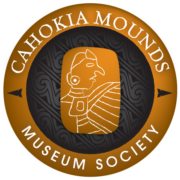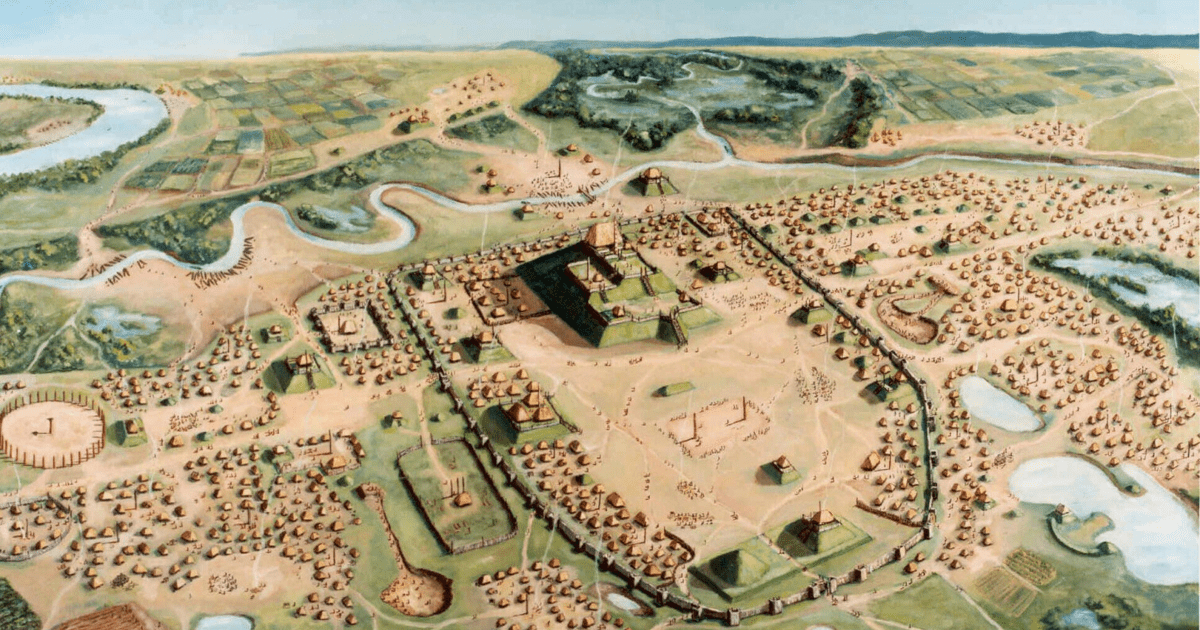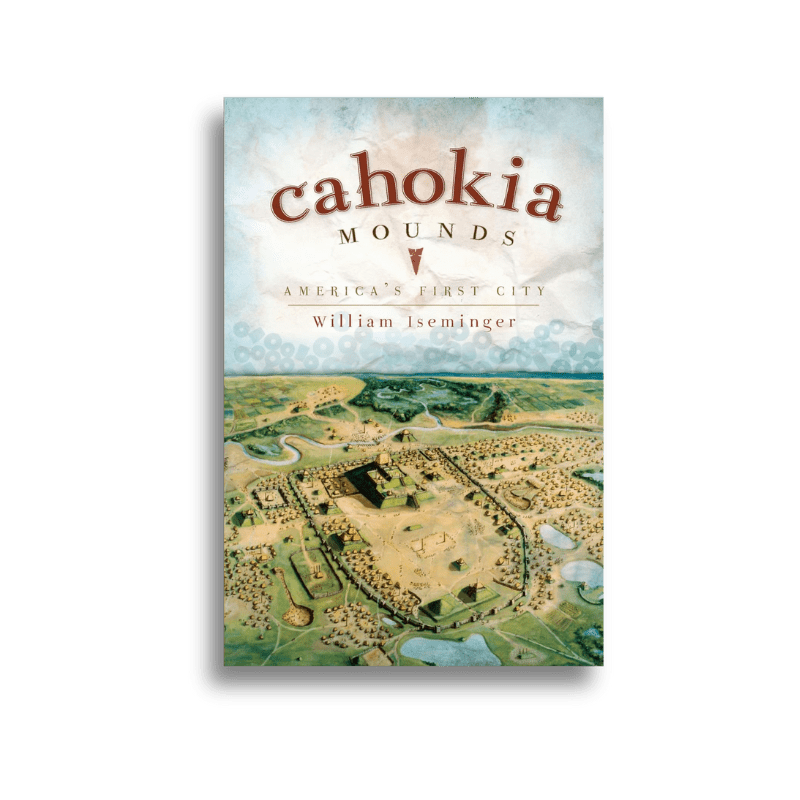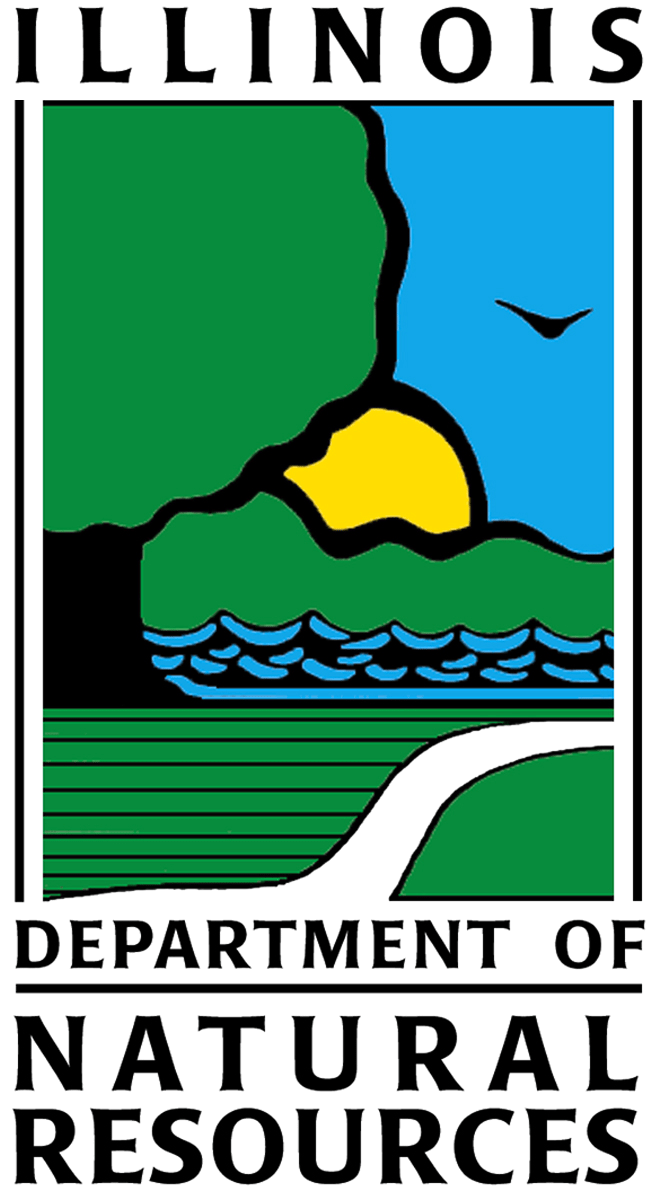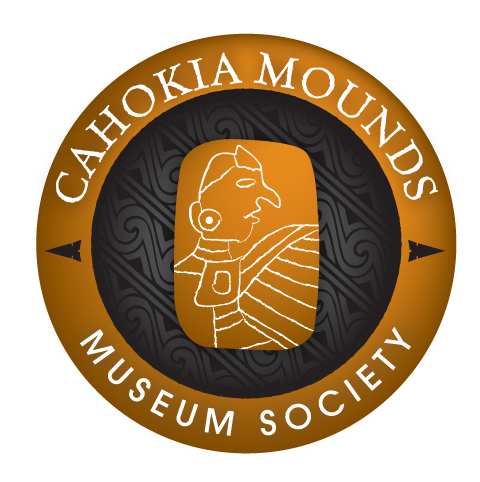Measuring Cahokia
Q & A: By Archaeologist, Bill Iseminger
Q: Did the Cahokians have a standard unit of measure as seen in some ancient societies?
A: We don’t know for sure but we suspect they did, at least for some special constructions.
Archaeologists can record the dimensions of houses, pits, and other features fairly precisely. However, with mounds it is more difficult since these have been subject to erosion, farming, or other factors that affect the height, basal dimensions, slope angles and often the original shape and orientation. Slope wash deposits eroding off the sides of mounds bury the original mound edges and, unless revealed by excavations, the original basal dimensions can only be estimated. Also, most mounds were enlarged or reconfigured several times. These factors affect being able to determine precise distances between mounds, which can vary by a few or many feet/meters, depending on your measuring points, resulting in estimates rather than exact measurements.
Nonetheless, several archaeologists have attempted determining units of measure. One of the first was Harriet Smith in 1941 working for the Illinois State Museum, conducting excavations
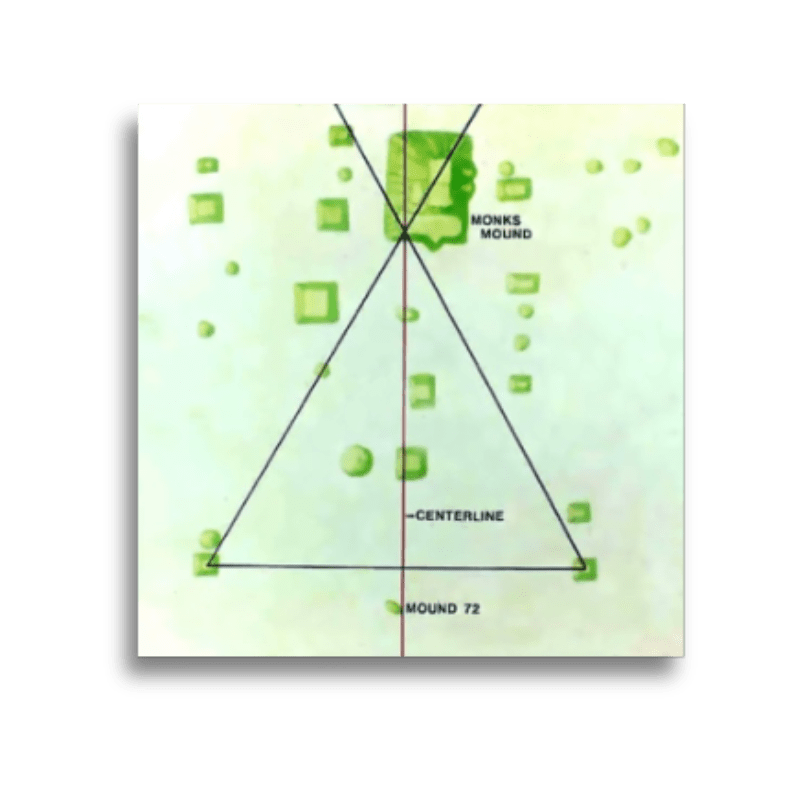
Fowler’s hypothesized north-south centerline for Cahokia based on distances between mounds. Artwork courtesy of Cahokia Mounds State Historic Site.
of Murdock Mound (Mound 55). Through detailed analysis of revealed mound dimensions and related structures in the excavations, she believed she could define a standard unit of measure of 16.5 feet (5.03 meters), or multiples or fractions of it.
In the mid-1960s, Dr.Melvin Fowler from the University of Wisconsin-Milwaukee, created a new photogrammetric map of the Cahokia site. Drawing lines between mounds he eventually recognized a pattern of an equilateral triangle connecting Mound 62 and 68 to the southwest corner of the First Terrace of Monks Mound. Bisecting that triangle, he drew
a line he called the north-south centerline of Cahokia. Where that line intersected Mound 72, he uncovered a large post pit at that location, where he had predicted a marker might be found. Excavations at the First Terrace found a small mound on that corner that had been rebuilt many times with several superimposed small postholes at that predicted location.
Warren Wittry (Illinois State Museum, and University of Illinois-Chicago), the discoverer of the Woodhenges at Cahokia, examined many possible measurements related to the construction of five of those post-circles and various sun, moon, and star alignments. Although some of his interpretations changed over time, based on measurable distances between posts, especially of Woodhenge III (the reconstructed one), he believed he saw a standard unit of measure he called “The Cahokia Yard.” It measured 3.425 feet (1.044 meters) and multiples and fractions thereof he believed were used to construct the Woodhenges and possibly the placement of mounds throughout the site.
Martha Rolingson and Clay Sherrod, working with the Arkansas Archaeological Survey, had examined mound sites throughout the Lower Mississippi Valley and found evidence for standardized distance for spacing between mounds at 47.5 meters (155.9 feet) they called the “Toltec Module.” They wondered if the same principles applied to Cahokia and conducted an intensive study of the Cahokia site and its mound locations. They found possible use of this module for several mound locations. But, using Woodhenge III and its center post and 48 perimeter posts, they posited that Woodhenge may have had an additional function as an “aligner” or engineering tool to help lay out the community, as a substantial number of mounds were aligned with Woodhenge posts. They also looked at possible mound alignments with posts at Mound 72 and Monks Mound.
These are a few studies that implied units of measure were being used at Cahokia, as well as various significant alignments, and there are probably others as well. Obviously, there are differences of opinion as to what those measurements are and how they may have been applied. So, we still don’t know for sure about any standard but these studies lay the groundwork for future research.
Sources Cited:
Norrish, Richard, Woodhenge—Work of a Genius. In Cahokian, February 1978.
Smith, Harriet, The Murdock Mound: Cahokia Site. In Explorations into Cahokia Archaeology, Bulletin 7, Illinois Archaeological Survey, 1969.
Rolingson, Martha A and P. Clay Sherrod, Surveyors of the Ancient Miss-issippi Valley. Arkansas Archaeolog-ical Survey Research Series No. 28, 1987.
Fowler, Melvin, editor, The Ancient Skies and Skywatchers of Cahokia. The Wisconsin Archaeologist, Vol. 77, Nos. 3-4, December 1996.
Young, Biloine W. and Melvin L. Fowler, Cahokia: The Great Native American Metropolis. University of Illinois Press, Urbana, 2000.
Read More By Bill Iseminger…
Cahokia Mounds: America’s First City

